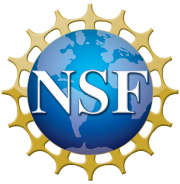Vis-a-thon 2025
PLECTIC: The Study of Complexity and its Underlying Simplicity
Authors
Cassy DeBlois Graduate Student, Rhode Island College, Biology linkedin.com/in/cassandra-deblois
COLLABORATOR
Karima Weinman MID, Rhode Island School of Design, Industrial Design karimaweinman.com
Critic
Leah Beeferman
The initial aim of this project was to capture comb jelly movement, specifically the antiplectic metachronal wave of their combs, in a still, 2D way. The root of "antiplectic" relates to a field of study called plectics which is the study of complexity and its underlying simplicity, a principal that was taken through the whole process. While the second image still captures the movement of the combs, the project evolved to explore the scale and complex geometry of a comb jelly, ranging from the first image of the whole animal to the final image of the individual cells that make up each comb. The acetate embodies the transparent nature of the jellies and shows that each simple layer comes together to create a beautiful abstraction of the animal.
INITIAL PROPOSAL NOTECARD
"The initial proposal that was selected after the intensive is entirely different from the project we made during the visathon weekend. We had met online with our critic and then again in person before the weekend and brainstormed entirely new ideas of what to create for the weekend. We then completely pivoted again the morning of the visathon weekend into a new initial proposal that we continued to develop over the weekend. It started as a study of movement, trying to capture metachronal movement in several animals like comb jellies, copepods, and millipedes, into a focus on the comb jelly again. We were thinking of making a mixed media zine that explored the different anatomy of the animal and finally settled on the acetate prints for the final product."
—Cassy
"I feel my role as a designer is to use art to make things more accessible and compelling to a wide audience. Visuals have a unique power to spark curiosity and draw people into topics they might not otherwise be interested in. It’s an initial grab to pull people in and get them excited about something! By turning abstract data or dense research into visually engaging stories, graphic design becomes a bridge between specialized knowledge and everyday understanding. This passion is what initially drew me to Vis-a-thon. I wanted to use my skills to showcase the research of scientists in the Rhode Island community."
—Karima
“I had to learn to get away from direct interpretations and allow an image to speak for itself, rather than letting a caption speak for it.”
—Cassy
"My artist had never heard of comb jellies before which is part of why I wanted to be involved in visathon in the first place, to communicate to people that there is this beautiful creature in Narragansett Bay that most people have not heard of before. I brought my expertise about the animal to this project along with scientific literature that I could help translate to my artist so that we could make art together."
—Cassy
Tools Used in the Project
Adobe Illustrator Lightbox Acetate Printing
Copyright
© PLECTIC, 2025

This material is based upon work supported in part by the National Science Foundation under EPSCoR Cooperative Agreement #OIA-1655221.
Any opinions, findings, and conclusions or recommendations expressed in this material are those of the author(s) and do not necessarily reflect the views of the National Science Foundation.




